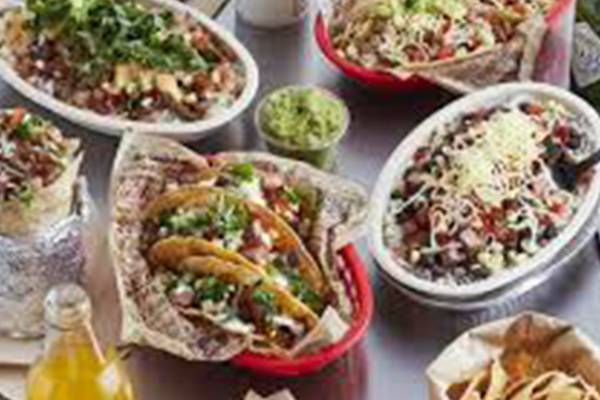1. STP
- Segment
The major segment of Chipotle is the consumer group in the upper-middle-class with ages ranging from eighteen to thirty-four years old (Chipotle case study). Segment divides the broad market into similar brands and products. Chipotle’s advertisement of Food with Integrity focuses on consumers from 18 to 34 years old with a Bachelor’s degree at least (Chipotle case study).
Chipotle’s two distinct segmentation groups are Grubbers and Health Nuts. This age group is the upper-middle class with a higher income level when it comes to the segment of the mass affluent. This segment is featured by an active lifestyle, environmental consciousness, image consciousness, tech-savvy, unfocused finance, and etc.
- Target group
When it comes to Chipotle’s position, it focuses on word-of-mouth advertising and is committed to its vision-related to Food with Integrity, with the purpose of attracting younger customers. The target market means a group of consumers that a business organization determines to put its marketing efforts and merchandise towards. The target markets of Chipotle are local markets, commercial events, and commuting tourists and workers (Dugan, 2013).
The positioning strategy of Chipotle can help it communicate its value proposition related to Fast-casual dining and Food with Integrity to target markets (Chipotle case study), to indicate its differentiation and competitive advantages. Its fast-casual dining extract ambiance and quality from casual dining, and fast from fast food, with a focus on freshness and health (Dugan, 2013).
- Position
The positioning process can define the variables of the marketing mix, in this way the target consumers can have a distinct and clear understanding of the product compared with products from others. Chipotle positions in the fast-casual segment. When positioning its products, Chipotle pays more attention to word of mouth and tries to avoid the traditional media. In this way, the younger customers take Chipotle as a more authentic brand.
In order to differentiate its products from those of its competitors like Panera Bread, Moe’s Southwest Grill, and Qdoba Mexican Grill (Chipotle case study), Chipotle focuses on Food with Integrity, which gives it an advantage over competitors.
2. Marketing Mix
- Product
The menu and products of Chipotle are limited, including burritos, tacos, salads, fruit drinks, burrito bowls, milk, and plus a soft drink (Chipotle case study), and so forth. Chipotle sells standardized products in different markets all over the world with few differences in various foods for different countries (Schoultz, 2014).
When cooking food products, Chipotle prefers to naturally raised meats and organic ingredients, with the purpose of creating better tasting means with high quality, and differentiating its products from others in this industry. Besides, the product strategy of Chipotle also promotes the ethical products sourcing principle as it denies genetically modified organisms (Brachman, 2013).
- Pricing
Chipotle charges at a premium price. As for the pricing strategy of Chipotle, it is over 10 Euros a menu, which is more expensive than other restaurants (Schoultz, 2014). Different from some cost leaders like Taco Bell and McDonald’s, Chipotle believes that customers tend to pay extra money for healthy food with organic ingredients (Chipotle case study).
Following the mission of Food with Integrity, Chipotle offers high-quality food through adopting gourmet, organic and fresh ingredients, which can make it better satisfy customers’ demands for healthier and fresh food. Chipotle uses a high price strategy because the price is proof of the real value and quality of its products.
- Place
As for the distribution strategy of Chipotle, it adopts a selective supplier from organic and meat farmers. It avoids the intermediaries between itself and its suppliers so that they can closely work together. Chipotle is supported by a juggernaut distribution system, which is owned by McDonald’s (Satran, 2012). Although its suppliers are limited currently, it will create more channels in the future.
- Promotion & advertising
With regard to the promotion and advertising of Chipotle, it attaches great significance to word of mouth. It has considerable media coverage from publications with articles and television programs related to its business, restaurant concept, and food (Chipotle case study).
Its marketing personnel focuses on consistently presenting its brand in promotional and advertising programs. As for its advertising mix, there are print, radio, online ads, outdoor, transit, and theater and TV advertising (Chipotle case study). In addition, along with the rapid development of digital technology, mobile, digital, and social media platforms are used in its marketing mix strategies.








Leave A Comment